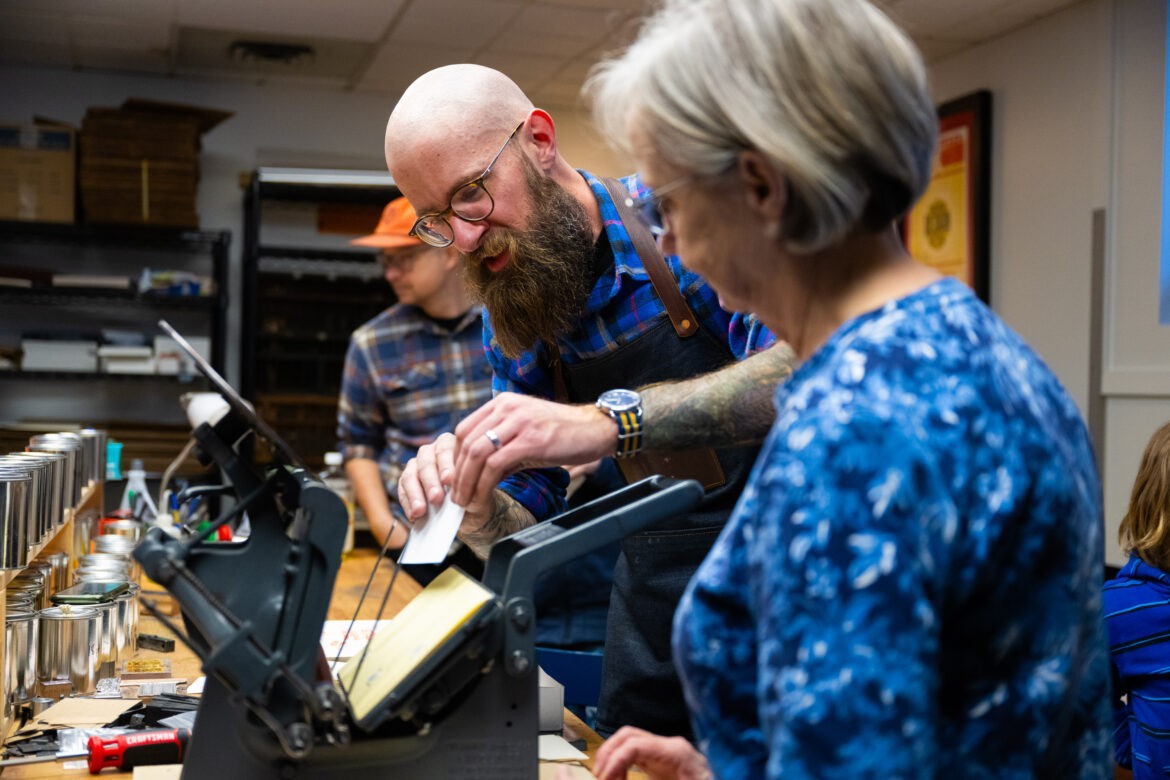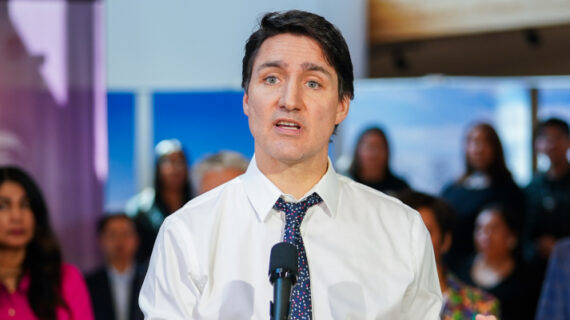- In 2013, the Calgary Herald headquarters was put up for sale and printing was outsourced. The Herald and Calgary Sun then shed 25 jobs and forced their newsrooms to merge in 2016.
- The Sprawl, an independent online Calgary-based publication launched in 2017 as a one-off experiment in “pop-up journalism” covering Calgary’s 2017 municipal election. Since then it's achieved significant success.
- The Sprawl practices "slow journalism," focusing on depth over immediacy, and is navigating new government policy and social media companies’ response to it.

The news media in Canada is in crisis. Policy responses to date are failing to solve for the information that citizens need to make informed decisions about important issues and debates. The Future of News series brings together leading practitioners, scholars, and thinkers to imagine new business models, policy responses, and journalistic content that can support a dynamic future for news in Canada.
It is either tragic or fitting that the saga of the Calgary Herald losing dozens of reporters and selling off its famous newsroom was documented by one man running a small online local media company.
“The Hollowing Of The Calgary Herald,” a deep chronicle of the Herald’s 141-year history as Calgary’s paper of record, is the product of The Sprawl, an independent publication launched in 2017. Its only full-time employee is veteran reporter and editor-in-chief Jeremy Klaszus.
Calgary’s media environment has only worsened in the year since “Hollowing” was published. Postmedia in the region has been gutted. In 2013, the Calgary Herald headquarters was put up for sale and printing was outsourced. The Herald and Calgary Sun then shed 25 jobs and forced their newsrooms to merge in 2016. Bell Media’s recent layoffs have also weakened TV news in Alberta. Major outlets like CBC and Global continue to report daily developments, but stories immediately vanish into the churn of social media without further analysis. Alt-weeklies like Fast Forward Weekly (FFWD), which provided Calgary news and entertainment, and award-winning magazines like Swerve are long gone.
“If you took the newspaper in its heyday, you have different sections: news, opinions, features, sports. I see The Sprawl as the features section of that fragmented paper,” Klaszus explains. Its name is a reference to Calgary’s infamous urban sprawl, both an iconic characteristic of the city and a minor obstacle in trying to report on it.

Surviving despite social media
Klaszus worked for FFWD, the Herald, and the CBC, but found opportunities were vanishing. The Sprawl began as a one-off experiment in “pop-up journalism” covering Calgary’s 2017 municipal election, but it has since produced issues on subjects ranging from the city’s growing food scene to what Calgary could look like in 2044.
“Budgets were being cut, publications were winding down. I was curious if there was room for something like the news section of FFWD in a new format. There were gaps in the media landscape. Now it’s all gaps.”
As search engines are inundated by AI and social media feeds offer infinite outrage, The Sprawl has tried to be an oasis from the despair. Its manifesto emphasises its aversion to cynicism, gloom, and reporting for the sake of reporting. The “slow journalism” it promotes—a focus on depth over immediacy—is not new, but The Sprawl, uniquely, builds pauses into its model.
“That came out of the original pop-up model. I covered the election, and then I went quiet, and then I’d pick a new subject and do another pop-up. Over time, those periods of silence receded and it became more of a traditional publication. Now it’s gone back. It serves a number of functions,” says Klaszus. “I’ve had people tell me they can keep up with The Sprawl, but can’t keep up with the CBC. Other times I just needed a break. Members responded positively to that, strangely. It helps me think, new creative formats emerge.”
Burnout has claimed countless journalism careers, and these pauses allow Klaszus to decide what stories are worth telling, not what stories social media thinks should be told. Notably, while X, the platform formerly known as Twitter, still allows links to Canadian news, Klaszus chose to step away from the perspective it forces on publications. As of last October, when Klaszus left the platform and his 14,400 followers, X traffic was down 14 percent from 2022 and still sliding. Less than a third of Canadians use X. The platform has suffered a clear decline but remains important to publications.
“Looking around Twitter and where it was headed, I didn’t think that was the future of social media or The Sprawl. Twitter is useful for finding out what’s going on, but it can become your assignment editor. You end up always responding to what people are talking about,” he says. “We’re supposed to be an antidote to these online conflagrations. But it’s still a good distribution method, so I struggle with it.”
Despite The Sprawl’s admirable manifesto, there are significant obstacles in decoupling from a social media landscape that’s become fundamentally entwined with journalism. Like every publication, it struggled to respond to the fallout of the federal government’s Bill C-18, which led Meta to block news on their Facebook and Instagram platforms in 2023. Having a core membership helps, but new members can’t be attracted to a publication they don’t know exists.
“There are only so many ways to find people who want to read and support you,” says Archie McLean, a journalism professor at Calgary’s Mount Royal University. “Losing Facebook and its related channels is a real problem. Then the patchwork of policies the federal government has put together to support local news doesn’t seem to have the desired effect. And in the digital age, people are out of the habit of paying for news.”
Winning over younger readers has been a particular challenge. They, as Klaszus noted, never experienced the physical newspaper traditions The Sprawl riffs on. Sixty-six percent of millennials and 85 percent of Gen Z turn to social media for Canadian news over traditional news platforms, which can allow algorithmic vagaries to dictate public knowledge. The value of reading and supporting deep looks at how Calgary teaches its students or spends its money is not obvious to someone who’s never seen this kind of content.
“All of us, especially those of us over a certain age, are reckoning with our changing media diet,” says McLean, “It’s no longer the newspaper sitting on the breakfast table and the TV or radio blaring through the house. Young people are out of the habit of consuming local news, and good local news is not mainstream.”
Currently The Sprawl boasts more than 4,500 newsletter subscribers. This month they had nearly 8,000 podcast downloads.
Reminding Calgarians the news is written by humans
To combat these problems, The Sprawl continues to experiment. It recently introduced printable comics by artist Sam Hester that explore Calgary’s history. Klaszus has also been conducting more interactive events. Both are physical reminders that news does not emerge in a vacuum and doesn’t just exist online.
“It’s hard to reach beyond our membership,” Klaszus says. “We did a pop-up newsroom at the library, which was cool. Bringing in a more experimental element to it, in place of social media. People respond to that. They’re curious. They are interested to see the people behind the news.”

But not every experiment has been a success. In 2020, Klaszus added two employees and two contractors and expanded into Edmonton. By the end of 2021, as costs surpassed crowdfunding revenue, the staff were gone and Calgary was once again his sole focus. Today, it’s just Klaszus and freelancers who run the operation. Some of his aborted growth was funded by government and Meta grants, which continue to provide about one-third of the publication’s finances. Such grants can help independent publications, but are fundamentally fickle, according to McLean.
“Bigger organisations tend to be better at securing grants,” he says. “Often they have staff dedicated to them, while a small organisation doesn’t have time to put together long, arduous applications that may or may not pay off and won’t solve the larger structural issues publications face.”
Today, Klaszus says The Sprawl is “sustainable” and “the crowdfunding engine is enough to pay me, my contributors, and my podcast editor.” Layoffs are never fun, but without corporate owners to answer to, The Sprawl can take risks, but hold steady when required, rather than pursue infinite growth.
“That’s been a process,” Klaszus says. “Growth’s not bad in itself. These gaps in the [media] landscape are ever-widening, so there is room to fill them. But to do it in a sustainable manner, for myself and anyone who’s doing the work, is always the challenge.”
Staying local in a global environment
With all this in mind, can The Sprawl’s local, hyper-focused model be replicated? Klaszus is uncertain, noting its 2017 launch was, by digital media standards, an eon ago.
“If I was to try starting The Sprawl now, I don’t think it would work. It basically started on Twitter. People would pass it around, people gathered there because they were curious about the municipal election. The social media landscape is way more fragmented now.”
There’s also the question of who could run these hypothetical publications. Professor McLean points out that, while his journalism students are enthusiastic and hard-working, what career stability does still exist is largely within legacy mainstream organisations, despite their budget cuts. For McLean, asking a young journalist to go create their own Sprawl is asking them to sign on to financial precarity, at least while poor government policy like C-18 and social media companies’ response to it continues to hamper the journalism industry.
“There should be 10 Sprawls covering different subjects that are supported by citizens and good government policy,” McLean says. “But starting these kinds of publications is very difficult. It requires the right kind of person who’s very in touch with the right kind of audience. But people aren’t paying for news in substantial ways, and policy isn’t supportive.”
Despite these obstacles, similar publications continue to emerge. LiveWire, for example, offers an independent take on Calgary’s daily news. The gaps Klaszus spoke of will only keep growing, but people will forever try to fill them.
“I feel a mix of optimism and pessimism,” Klaszus says. “When I think of the resources a city newspaper like the Calgary Herald had, how do you replace that? But people are taking little bits of it and making it work, usually through direct reader support. They’re more in tune with their readers. They don’t have the luxury of sitting back and being divorced from what people think.”
In short, The Sprawl’s model is effective, but it is also hard and requires the right background, personality, and financial resources. The Sprawl feels like a publication that exists in both reaction to, and defiance of, modern news trends.
“I worry about local news,” McLean says. “Long-term, there’s always going to be a demand for quality. Ironically, when we’re awash in information, the need for valuable, accurate info becomes more important. It’s unclear how to make money, but with people making smart personal investments, non-profits investing, and readers supporting, I think there is a future. But the short term doesn’t feel great.”
Whatever the future holds, The Sprawl will continue to serve Calgary for as long as its founder and editor-in-chief Jeremy Klaszus feels it’s appropriate. And if one of its hiatuses becomes permanent, he assures me that’s okay.
“These things have a lifecycle,” he says. “Looking at the history of publications in Calgary, publications show up and serve the city for the time, and then they don’t. I try to keep that in mind. I don’t have to keep it going at all costs.”
The Future of News series is supported by The Hub’s foundation donors and Meta.




